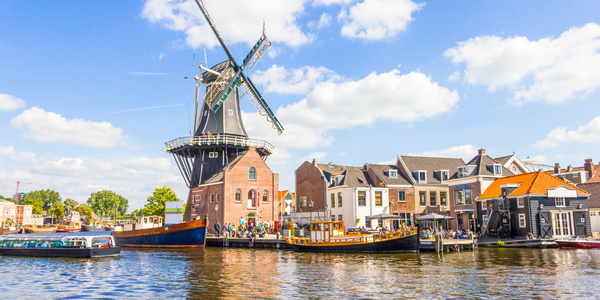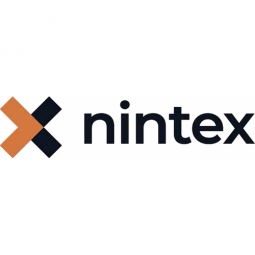Technology Category
- Cybersecurity & Privacy - Identity & Authentication Management
Applicable Industries
- Cities & Municipalities
- Finance & Insurance
Applicable Functions
- Logistics & Transportation
- Procurement
Use Cases
- Leasing Finance Automation
- Smart Contracts
About The Customer
The Metropolitan Redevelopment Authority (MRA) is a government agency based in Perth, Australia. The agency oversees hundreds of active contracts worth about AU$500 million a year. The contract approval process at MRA is complex and can involve up to 100 steps, depending on the contract's size and complexity. The agency needed a solution that could provide visibility into the contract approval process, identify and address bottlenecks, and implement workflow changes quickly and cost-effectively to meet new requirements and mitigate risks.
The Challenge
The Metropolitan Redevelopment Authority (MRA), a government agency in Australia, was grappling with a lack of visibility into its contract approval process. This made it difficult to identify and address bottlenecks, leading to time-consuming and costly processes. The agency oversees hundreds of active contracts worth about AU$500 million a year, and getting MRA authorized staff to approve a contract could take up to 100 steps, depending on the contract’s size and complexity. The agency needed to know where each contract was in the workflow at any given time to address bottlenecks and keep the process efficient. They also needed the agility to implement workflow changes quickly and cost-effectively to meet new requirements and mitigate new risks.
The Solution
Connected Systems developed a Nintex workflow solution for MRA that streamlined a 100-step contract management process involving multiple levels of approvals, with up to 10 approvers for each contract. The solution provided automated workflows for employees and real-time email approval notifications for delegated authorities. The implementation of Nintex over four months was estimated to be 35% less time-consuming and costly than more complex, custom workflow development. The solution also allowed MRA to update workflows to align with evolving business processes quickly and simply. As a result, MRA could handle updates internally and increase the frequency of updates from twice yearly to monthly.
Operational Impact
Quantitative Benefit

Case Study missing?
Start adding your own!
Register with your work email and create a new case study profile for your business.
Related Case Studies.

Case Study
Turning A Stadium Into A Smart Building
Honeywell created what it called the “intelligent system” for the National Stadium in Beijing, China, turning the venue for the opening and closing events at the 2008 Summer Olympics into a “smart building.” Designed by highly controversial artist Ai Weiwei, the “Bird’s Nest” remains one of the most impressive feats of stadium architecture in the world. The 250,000 square meter structure housed more than 100,000 athletes and spectators at a time. To accommodate such capacity, China turned to Honeywell’s EBI Integrated Building Management System to create an integrated “intelligent system” for improved building security, safety and energy efficiency.
.png)
Case Study
Smart Street Light Network (Copenhagen)
Key stakeholders are taking a comprehensive approach to rethinking smart city innovation. City leaders have collaborated through partnerships involving government, research institutions and solution providers. The Copenhagen Solutions Lab is one of the leading organizations at the forefront of this movement. By bringing together manufacturers with municipal buyers, the Copenhagen Solutions Lab has catalyzed the development and deployment of next-generation smart city innovations. Copenhagen is leveraging this unique approach to accelerate the implementation of smart city solutions. One of the primary focus areas is LED street lighting.

Case Study
Buoy Status Monitoring with LoRa
The Netherlands are well-known for their inland waterways, canals, sluices and of course port activities. The Dutch Ministry of Infrastructure indicates that there are thousands of buoys and fixed items in and near water environments that would profit from IoT monitoring. One of the problems with buoys for example, is that they get hit by ships and the anchor cable breaks. Without connectivity, it takes quite some time to find out that something has happened with that buoy. Not to mention the costs of renting a boat to go to the buoy to fix it. Another important issue, is that there is no real-time monitoring of the buoys at this moment. Only by physically visiting the object on the water, one gains insight in its status.

Case Study
Barcelona Case Study
Barcelona’s heavy traffic and its associated high levels of pollution were the primary factors that motivated some companies and universities to work on strategies for improving traffic in the city centre. Bitcarrier is one of the technologies involved in the In4Mo Project, whose main objective is to develop the applications that form the core of smart mobility, one of the fundamental pillars of the smart city concept.

Case Study
China Mobile Smart Parking
Smart Parking, powered by NB-IoT technology, is making it easier for drivers to find free parking spots. Cities can better manage their parking assets and maximize the revenue available to them as a result. Drivers searching for parking create congestion and pollution by circling and hunting for available parking. Smart Parking services are able to significantly ease these problems by guiding a driver directly to a parking space.








